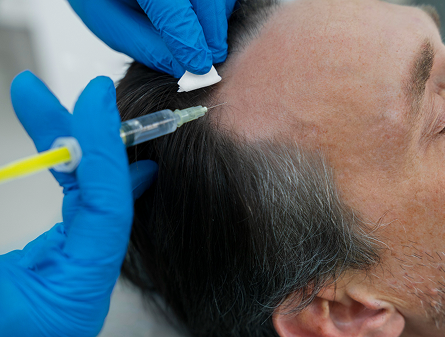Microneedling is a treatment where very small needles create tiny punctures in the top layer of the skin called the epidermis. It can help to promote the growth of hair from dormant follicles as the punctures cause the skin to activate its healing properties.
Hair vitamins can be used to help prevent hair shedding. They are most effective if you are using them to treat a nutrient deficiency that has caused your hair to fall out. Microneedling is a minimally invasive treatment that can be performed at home and in a clinic.
The effectiveness of hair vitamins can depend on the quality of ingredients used and if they can target your form of hair loss. See how microneedling and hair vitamins compare in the comparison table below.
- Microneedling uses fine needles to trigger healing, improve blood flow, and enhance topical absorption.
- Unlike hair vitamins, it directly targets the scalp and hair follicles through physical application.
- Hair vitamins work internally to support overall hair quality by addressing potential deficiencies.
- Compared to microneedling, they act systemically and don’t stimulate follicles directly.
- Home microneedling tools cost around $30–$100, while clinic sessions are more expensive.
- Offers a cost-effective option for proactive users with minimal upkeep costs.
- Hair vitamins are typically priced at $10–$30 monthly.
- Unlike microneedling, they require ongoing purchase but are easy to access.
- Microneedling is done weekly or fortnightly, with results becoming visible in 3–6 months.
- Long-term consistency is key for sustained benefit.
- Hair vitamins are taken daily, and improvements usually show after 2–4 months.
- Compared to microneedling, they’re quicker to use but may take longer to show scalp-specific results.
- Microneedling is an external method involving scalp stimulation via dermarollers or pens.
- Boosts natural healing and enhances topical efficacy.
- Hair vitamins are ingested and provide nutrients like biotin and zinc.
- Unlike microneedling, they nourish from within but don’t physically interact with the scalp.
- Microneedling is generally safe when performed hygienically, but failure to sterilise tools can cause infection.
- Minor side effects like redness may occur if the technique or sanitation is poor.
- Hair vitamins are usually safe but may cause side effects if overdosed.
- Compared to microneedling, they carry less risk of physical irritation but may interact with other supplements.
- Microneedling takes time and care to perform correctly.
- Requires routine, preparation, and aftercare.
- Hair vitamins are easy to take—just one capsule daily.
- Unlike microneedling, they require no effort beyond adhering to a regular schedule.
- Microneedling tools are available online and in some stores without a prescription.
- More specialised than vitamins but still accessible.
- Hair vitamins are readily available in pharmacies and supermarkets as well as online.
- More accessible than microneedling and widely marketed.
- Microneedling results are gradual and sustainable with continuous use.
- Benefits decline over time if the routine is stopped.
- Hair vitamins maintain results as long as they’re taken consistently.
- Compared to microneedling, they may have residual benefits if they address deficiencies.
- Microneedling enhances the absorption of minoxidil and other topicals.
- Complements both internal and external hair growth therapies.
- Hair vitamins pair well with microneedling and topicals by improving internal conditions.
- Unlike microneedling, they support scalp function nutritionally.
- Microneedling appeals to users who want a direct, physical solution with visible engagement.
- Feels proactive and results-driven.
- Hair vitamins attract users who prefer a wellness-based, holistic routine.
- Compared to microneedling, they offer a more passive and gradual experience.
- Microneedling improves skin texture, boosts collagen, and enhances scalp health.
- Adds dermatological value beyond hair regrowth.
- Hair vitamins offer broader wellness benefits, supporting skin, nails, and energy levels.
- Unlike microneedling, they contribute systemically to overall health.
- Microneedling devices are reusable, with some waste from replacement heads.
- Less frequent waste generation compared to consumables.
- Hair vitamins generate ongoing packaging waste through monthly bottles.
- Compared to microneedling, they are less environmentally sustainable.
Shop our hair solutions
We are committed to providing affordable hair regeneration services for people all over Australia. Our formula can help you regain your confidence.
Shop Now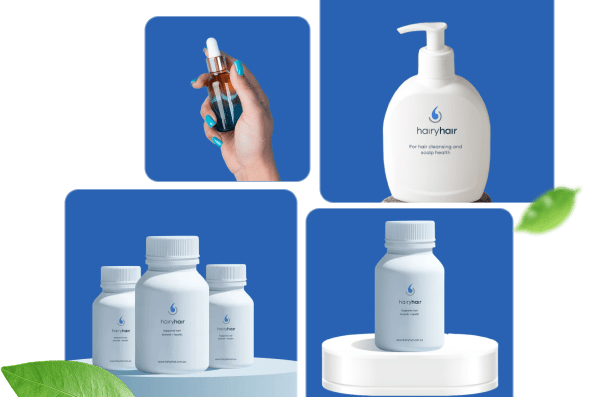

Microneedling vs Vitamins for Hair Regrowth Comparison Summary
The effectiveness of microneedling for hair loss requires further study but research indicates that it can help with regrowing hair. It may need to be combined with other treatments like platelet-rich plasma (PRP) injections or topical pharmaceuticals like minoxidil depending on the severity of your hair loss.
Hair vitamins also require more research as to their effectiveness but they can encourage hair growth by ensuring you have sufficient nutrients for the health of your scalp. Microneedling sessions in a clinic can be an expensive treatment option since weekly sessions are required for 3-4 months followed by maintenance sessions to see and maintain results.
An at-home device can alleviate this expense but it will not be as effective as a clinical-grade device and there is the potential for infection or damage to your scalp if your device is not properly disinfected and it is not used carefully.
Hair vitamins are a cheaper solution but some research will be required to find the right vitamins to help with your hair loss. If you over-consume certain vitamins it can lead to hair loss or cause serious health issues so it’s important to take any supplements under the supervision of a healthcare professional.
User Guidance
Microneedling can come with some potential side effects but they are typically well tolerated. These include redness, mild swelling, and flaking. Hair vitamins are usually well tolerated but overloading on certain nutrients like the amino acid lysine can cause issues in your liver and heart.
Microneedling is fairly easy to use and accessible if you cannot access a clinic that offers the treatment you can order a derma roller device online. Hair vitamins are also easy to access and are compatible with daily routines.
Microneedling works well with other topical treatments and can provide effective results if when used as a monotherapy it does not stimulate hair growth. Hair vitamins can work well with other treatments that target different causes of hair loss for a comprehensive hair growth solution.
Take Our Hair Loss Quiz to See Which Treatment Suits You?
Take A Hair Quiz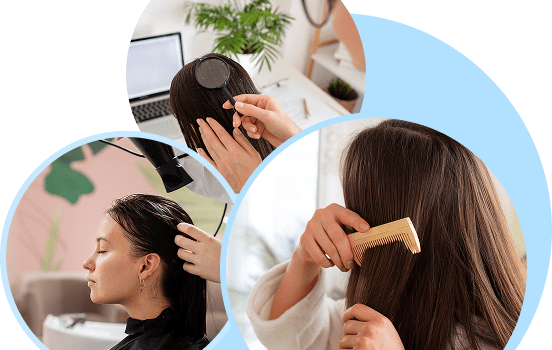
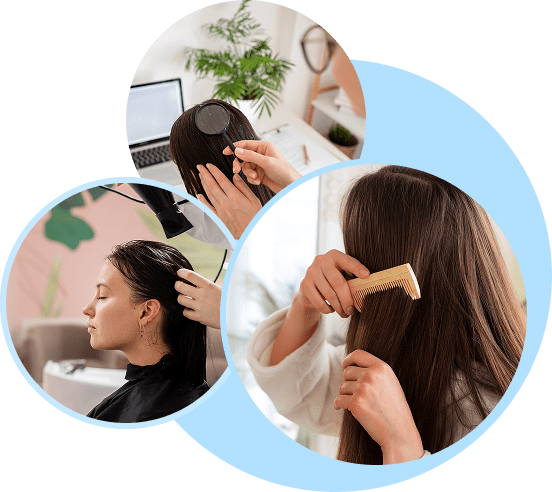
Frequently Asked Questions
We have put some commonly asked questions.
Nunc scelerisque tincidunt elit. Vestibulum non mi ipsum. Cras pretium suscipit tellus sit amet aliquet. Vestibulum maximus lacinia massa nontor.
Platelet-rich plasma (PRP) treatment involves drawing blood from the patient, isolating the beneficial nutrients and injecting it into the scalp where hair loss is occurring. This promotes hair growth and has many other applications from encouraging healing to skin rejuvenation.
Platelet-rich plasma (PRP) treatment involves drawing blood from the patient, isolating the beneficial nutrients and injecting it into the scalp where hair loss is occurring. This promotes hair growth and has many other applications from encouraging healing to skin rejuvenation.
Platelet-rich plasma (PRP) treatment involves drawing blood from the patient, isolating the beneficial nutrients and injecting it into the scalp where hair loss is occurring. This promotes hair growth and has many other applications from encouraging healing to skin rejuvenation.
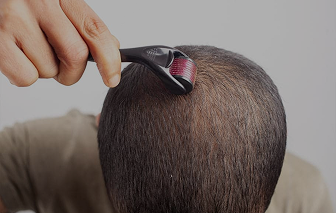




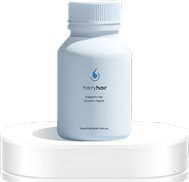
 See All
See All